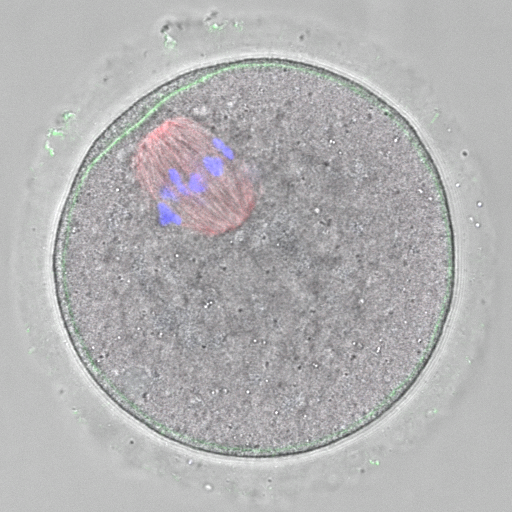By Kevin Duxbury, Monash University
I was fortunate enough to embark on a fascinating journey into bio-mathematics taking the form of an AMSI research project. It was wonderful to gain insight into academia and possible career paths. To me, this project was like the most intense maths assignment I have ever done, where the answer isn’t to be found in a book or the lecture notes. While the problem was challenging, the sense of accomplishment matches the difficulty.
My project was to locate the source of a chemical called actin within human egg cells. The data we had to work with is the intensity of actin on the surface of the cell. It is also believed that the actin degrades as it travels through the cell to reach the surface. As a starting point we assume that there is only one source within the cell. There are five parameters which describe the source and affect the surface intensity. These are the physical location of the source within the cell (the location is in three dimensional space), the intensity of the source and the degradation rate.
By only considering one source, we know that the peak surface intensity must align with the source. Hence, the orientation of the source can be found by locating this peak. Unfortunately, noise in the data can make this difficult to pinpoint. We ended up using a technique called ‘centre of mass’, which we can adapt to find the ‘centre of intensity’ instead of mass. This technique uses averages to compensate for the noise which should (hopefully) average to zero. For the radial distance, intensity and degradation rate we wrote an optimisation algorithm to try to find the best match between our data and the analytic solution.
Our final results found that the algorithm for re-creating the single source was able to match simulated data to a solution within acceptable error. One concern for the algorithm is that the amount of experimental data is much less than the simulated data. This may prove problematic for the algorithm as is has less information to try to match the model to.
This project will be extended over the coming year. The next logical step is to consider multiple sources within the cell.
Kevin Duxbury was one of the recipients of a 2015/16 AMSI Vacation Research Scholarship.

